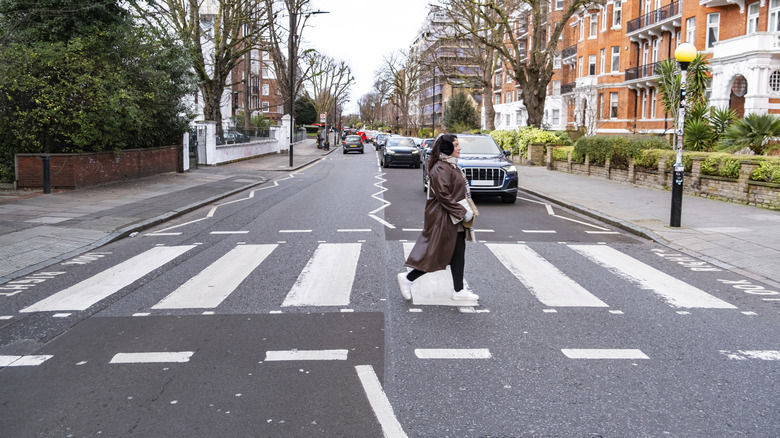Why Are Crosswalks Called 'Zebra Crossings' In England?
If you've ever walked through a street in the U.K. and noticed bold white stripes painted across the dark road surface, you've already met the famous zebra crossing. It might sound like a quirky British term, but "zebra crossing" is actually the official name for those striped pedestrian paths, and there's a pretty good reason behind it. These crossings didn't always look this way, though. And the story behind their design is all about safety, visibility, and a little bit of creative thinking.
Back in 1951, the town of Slough in England became home to the world's very first zebra crossing. The design was simple but eye-catching — white-painted stripes that stood out clearly against the road. It didn't take long for someone to say what everyone was thinking — it looked like a zebra. British Prime Minister Jim Callaghan is often credited for giving it the name, and it stuck. But behind the catchy name is a rich history.
Born from a need for safety
The idea of using stripes sure made the roads look different, but it was all done to improve pedestrian safety, just like the bizarre pedestrian scoop invention from the 1930s. Before zebra crossings, British roads used metal studs and basic posts to mark pedestrian paths. But the problem with them was that the drivers couldn't always see them clearly, and the poor visibility at night or the bad weather only made it worse. Additionally, after World War II, car traffic was increasing, and something had to be done to reduce pedestrian accidents.
Then, in the late 1940s, the U.K. ran experiments across various cities, testing out different kinds of road markings. As a result, the striped black and white design stood out as the most visible and effective. It helped drivers spot crossings from a distance, while also alerting pedestrians to where they had the right of way. And unlike traffic lights or signals, zebra crossings gave pedestrians priority — a radical idea at the time.
From Slough to the world
Once it proved effective, the zebra crossing quickly spread across the U.K. and then to other countries. One of the most iconic examples is the crossing outside Abbey Road Studios in London. Thanks to The Beatles' album cover, that specific zebra crossing became a global landmark — and it's even officially listed as a heritage site today. These black-and-white stripes have become part of British road identity. Tourists still visit Abbey Road just to recreate the famous photo, and traffic often pauses just for the photo.
But Britain didn't stop with zebras. Over the years, other quirky animal-named crossings popped up, like pelican, puffin, and toucan crossings, each with its own set of rules and technology. There was even a panda crossing for a brief time, but just like confusing traffic signs, the panda crossing ended up puzzling drivers more than helping, so it was scrapped. Still, the zebra remains the most recognizable and the most widely adopted.


